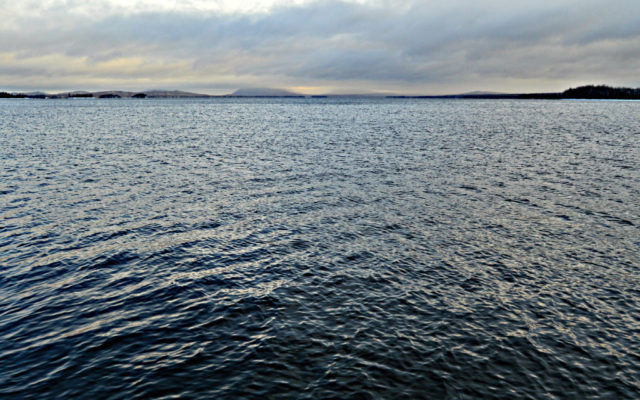
Moosehead Lake region fishing report
By Tim Obrey, Moosehead Lake region fisheries resource supervisor
Well, 2020 is in the rearview mirror and hopefully life will get back to normal soon. It was a tough year for fieldwork for the fisheries staff in the Moosehead Lake region. We were asked to work from home back in March and thought we would be back in the office in a couple weeks. It didn’t really work out that way, but we were able to adapt and were successful at accomplishing several tasks over the summer and fall that were important.
I spent most of last spring/summer in the shadow of Katahdin conducting a creel survey on Chesuncook Lake. I enjoy working there. I spent the summer of 1986 working out of a small tow-behind trailer (aka “The Tuna Can”) that was parked in the Allagash Gateway Campground. The fishing was terrific back then and I met a lot of good people. Some of them are still around. I remember measuring 18- to 20-inch salmon in the 2- to 3-pound range and a few smashers at the 4-pound mark. The fishing in the river below Rip Dam was also pretty impressive. Imagine a 4-plus pound salmon gulping in your drifting caddis pattern then screaming off into that heavy Penobscot water. A lot of great action.
As I’ve written before, the conditions have changed at Chesuncook Lake and the West Branch of the Penobscot River. Too many salmon and not enough forage (smelts) is the problem, and we are working diligently to get that fishery turned around. We are putting in a lot of time and effort into research and monitoring of this fishery.
During “the good ole days” we estimated up to 8,000 total days of fishing on the lake in a year. This includes both summer and winter. We also estimated around 2,000 to 3,000 salmon were harvested during an average year. At the time, we were concerned with increasing use and harvest. That can strip a lake of the quality fish. New stricter regulations were implemented to protect the salmon fishery. Shortly after that, the mills began to close in Millinocket. All those anglers that would scoot up the Golden Road and fish the lake were leaving. In general, we began to see less fishing pressure statewide too. The new regulations over-protected the salmon, they stockpiled, and growth began to decline. We liberalized the regulations quickly, but we are still working to get growth back to where it could be.
In 2017, we conducted summer and winter surveys at Chesuncook Lake. We estimated around 1,200 days of fishing on the lake for the entire year with a paltry 300 salmon harvested, 10 times fewer than in the 1970s and 1980s! This was a formidable problem. In 2018, we implemented a no size or bag limit on salmon under 16 inches to thin down the population. We maintained the one salmon limit on fish over 16 inches in an effort to maintain a few quality fish in the lake. We knew that we had to do two things that were directly related. First, we had to attract more people to the lake. The fishing can be very fast, especially in the winter. It’s pretty good, just a lot of fish in the 13- to 15- inch range. Second, we had to get that annual harvest up to historic levels, maybe even higher for a few years just to get ahead of the growth problem.
We are making some headway. In 2018, we flew over the lake and counted anglers both summer and winter to determine angler use. We estimated a total of around 2,400 anglers for the year. We didn’t conduct a summer creel survey that year but the harvest of salmon in the winter was estimated at over 700 fish. In 2020, total use for the year was around 1,600 angler-days and we estimated over 1,500 salmon were removed with the new liberal regulations. This is good news. We are trending in the right direction, but we still need to increase use and harvest. The Memorial Day weekend salmon derby organized by the Natural Resource Education Center in Greenville helps. We hope to make the spring derby bigger and attract more anglers.
We are encouraging anglers to keep all the smaller salmon they catch while fishing Chesuncook Lake. I know it’s tough sometimes to keep a 12- or 13-inch salmon, but the only way we dig ourselves out of this, is to remove more hungry mouths from the lake. Those small fish will eat a lot of smelts over their lifetime and we need to take the pressure off the smelt population to let it rebuild. We will be working on the lake again in 2021. Hope to see you fishing.